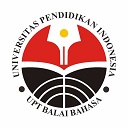An Analysis of Techniques and Accuracy in Consecutive Interpreting from Indonesian to Japanese: A Case Study of The Indonesian Presidential State Speech
Abstract
This research aims to determine the consecutive interpreting techniques used and the accuracy of interpreting produced in the oral translation of the state speech of the President of the Republic of Indonesia which was translated from Indonesian into Japanese. This research uses a descriptive qualitative method with data collection techniques such as triangulation, non-participatory technique, note-taking technique, and interview. This research uses interpreting techniques proposed by Jones (2002) to analyze the techniques and used parameters for assessing the accuracy of the interpretation proposed by Saehu (2018) and Nababan, Nuraeni, and Sumardiono (2012) to assess the quality of the interpretation. Based on the results of the analysis, it was found that the most used technique was omission. Omission is most widely used to clarify important messages that must be conveyed to listeners by ignoring things that are considered less important. However, the use of the omission technique causes many translation results to be less accurate because there are still messages from the source language that are not conveyed completely into the target language. Based on the analysis, it is also found that the theory of interpreting techniques proposed by Jones is not suitable for consecutive interpreting because it cannot accommodate all utterances in consecutive interpreting. After all, there are no data that use anticipation techniques and there are interpreting processes that do not use interpreting techniques at all based on the theory proposed by Jones. Future researchers can use more than one technique or can use other theories that can strengthen, support, and even deepen to analyze consecutive interpreting techniques and assess their accuracy. Future researchers can also assess the quality of an interpretation with several experts so that the results can be more objective.
Keywords
Full Text:
PDFReferences
AICI Interpreters. (n.d.). Lebih dari Sekadar Menerjemahkan Kata [More Than Just Translating Words]. Retrieved from https://aici-interpreters.com/detailpost/lebih-dari-sekadar-menerjemahkan-kata
Aryanto, B. (2015). Interferensi dan strategi penerjemahan lisan pada aktivitas luar kelas mahasiswa Program Studi Sastra Jepang Universitas Dian Nuswantoro [Interference and oral translation strategies in extra-class activities of Japanese Literature Study Program students at Dian Nuswantoro University]. LITE Jurnal Bahasa, Sastra, Dan Budaya, 11(1), 45–65. Retrieved from https://publikasi.dinus.ac.id/index.php/lite/article/view/1056
Baihaqi, A. (2017). Penerjemahan dan Kesepadanan dalam Penerjemahan [Translation and Equivalence in Translation]. Retrieved from https://www.researchgate.net/publication/348279512_PENERJEMAHAN_DAN_KESEPADANAN_DALAM_PENERJEMAHAN
Dong, H. (2018). A comparative study of completeness rates between simultaneous interpretation and consecutive interpretation of professional interpreter: a case study focused on Japanese-Chinese interpretation. Interpreting and Translation Studies, 18, 99–120. https://doi.org/10.50837/its.1806
Jones, R. (2002). Conference Interpreting Explained. United Kingdom: St. Jerome Publishing.
Ministry of Law and Human Rights. (2016). Peraturan Menteri Hukum dan Hak Asasi Manusia Republik Indonesia tentang Syarat dan Tata Cara Pengangkatan, Pelaporan, dan Pemberhentian Penerjemah Tersumpah (Permenkumham Nomor 29 Tahun 2016) [Regulation of the Minister of Law and Human Rights of the Republic of Indonesia concerning the Requirements and Procedures for Appointment, Reporting, and Dismissal of Sworn Translators (Permenkumham Number 29 of 2016)]. Retrieved from https://peraturan.bpk.go.id/Details/133253/permenk umham-no-29-tahun-2016
Ministry of Manpower. (2021). Keputusan Menteri Ketenagakerjaan Republik Indonesia tentang Penetapan Standar Kompetensi Kerja Nasional Indonesia Kategori Aktivitas Profesional, Ilmiah, dan Teknis Golongan Pokok Aktivitas Profesional, Ilmiah, dan Teknis Lainnya pada Jabatan Kerja Juru Bahasa Lisan Konferensi (Kepmenaker Nomor 198 Tahun 2021) [Decree of the Minister of Manpower of the Republic of Indonesia concerning the Determination of Indonesian National Work Competency Standards for the Category of Professional, Scientific, and Technical Activities of Other Main Groups of Professional, Scientific, and Technical Activities in the Position of Conference Interpreter (Minister of Manpower Decree Number 198 of 2021)]. Retrieved from https://www.hpi.or.id/wp-content/uploads/2022/01/Kepmenaker-198_SKKNI- Jurbah-Konferensi.pdf
Khrisna, D. A. N. (2008). Kajian Penerjemahan Lisan Konsekutif dalam Kebaktian Kebangunan Rohani Bertajuk “Miracle Crusade - This is Your Day!” [Consecutive Translation Study in Revival Service Titled “Miracle Crusade - This is Your Day!” ] (Master’s thesis). Retrieved from https://api.semanticscholar.org/CorpusID:193929116
Maharani, A. K. (2019). Analisis teknik penerjemahan dan kualitas penerjemahan pada istilah budaya sosial Tiongkok [Analysis of translation techniques and translation quality on Chinese social culture terms]. Prasasti: Journal of Linguistics, 4(1), 9–18. Retrieved from https://jurnal.uns.ac.id/pjl/article/view/11028/20306
Nababan, M., Nuraeni, A., & Sumardiono. (2012). Pengembangan Model Penilaian Kualitas Terjemahan [Development of Translation Quality Assessment Model]. Kajian Linguistik dan Sastra, 24(1), 39–57. Retrieved from https://publikasiilmiah.ums.ac.id/handle/11617/222 0
President of the Republic of Indonesia. (2019). Peraturan Presiden tentang Penggunaan Bahasa Indonesia (Perpres No. 63 Tahun 2019) [Presidential Regulation on the Use of Indonesian Language (Presidential Regulation No. 63 of 2019)]. Retrieved from https://peraturan.bpk.go.id/Details/121661/perpres-no-63-tahun-2019
Ministry of Foreign Affairs Education and Training Center. (n.d.). Penjurubahasaan (Interpreter) [Interpreter]. Retrieved from https://lms.kemlu.go.id/local/pages/?id=51
Saehu, A. (2018). Interpreting: Teori dan Praktik [Interpreting: Theory and Practice]. Bandung: Nuansa Cendekia.
Saputra, E., Saleh, M., & Emma, M. H. (2020). Gaya Bahasa Teks Pidato Presiden Republik Indonesia Joko Widodo. Jurnal Pembelajaran Bahasa dan Sastra Indonesia, 1(2).
Saputri, K. (2019). Analisis Kesalahan Morfologi pada Pidato Presiden Joko Widodo dalam Rangka Pelantikan Presiden dan Wakil Presiden Terpilih Periode 2019-2024. Jurnal Skripta, 5(2).
Saragih, F. A., & Solikhan, H. (2021). Translation quality analysis of Japanese oral translation (Tsuyaku). JAPANEDU: Jurnal Pendidikan Dan Pengajaran Bahasa Jepang, 6(1), 40–54.
Sugiyono. (2022). Metode Penelitian Kualitatif. Bandung: Alfabeta.
Syahputra, B. P., Amri, Y. K., & Sagala, R. W. (2021).
Consecutive Interpreting. Medan: UMSU PRESS.
DOI: https://doi.org/10.17509/japanedu.v9i2.72684
Refbacks
- There are currently no refbacks.
Copyright (c) 2025 JAPANEDU: Jurnal Pendidikan dan Pengajaran Bahasa Jepang

This work is licensed under a Creative Commons Attribution-ShareAlike 4.0 International License.
 Published by:
Published by: Department of Japanese Language Education, Faculty of Language and Literature Education
Universitas Pendidikan Indonesia
 Online ISSN: Online ISSN:2528-5548 |

JAPANEDU: Jurnal Pendidikan dan Pengajaran Bahasa Jepang (e-ISSN:2528-5548) lisenced under a Creative Commons Attribution-ShareAlike 4.0 Internasional (CC BY-SA 4.0)


